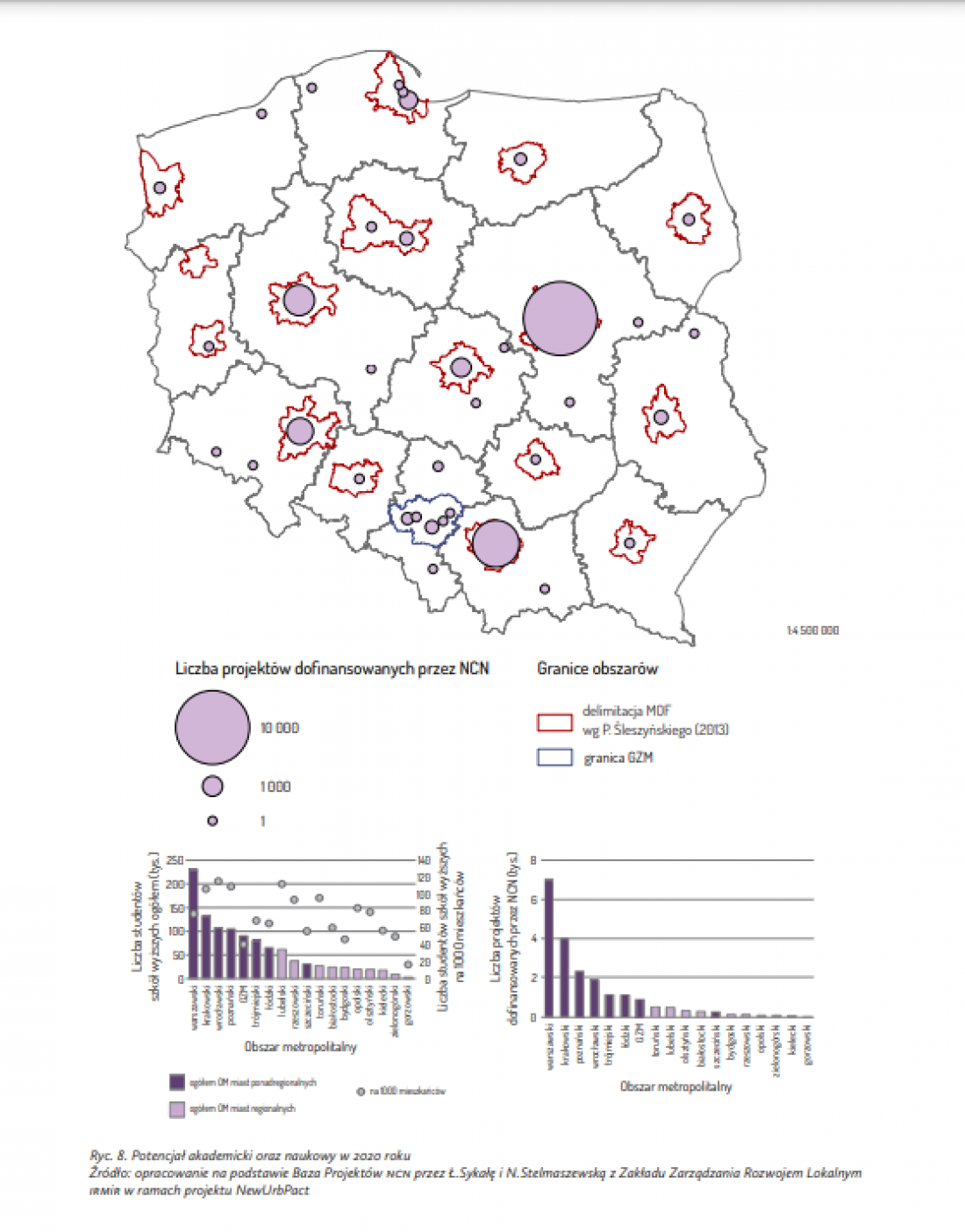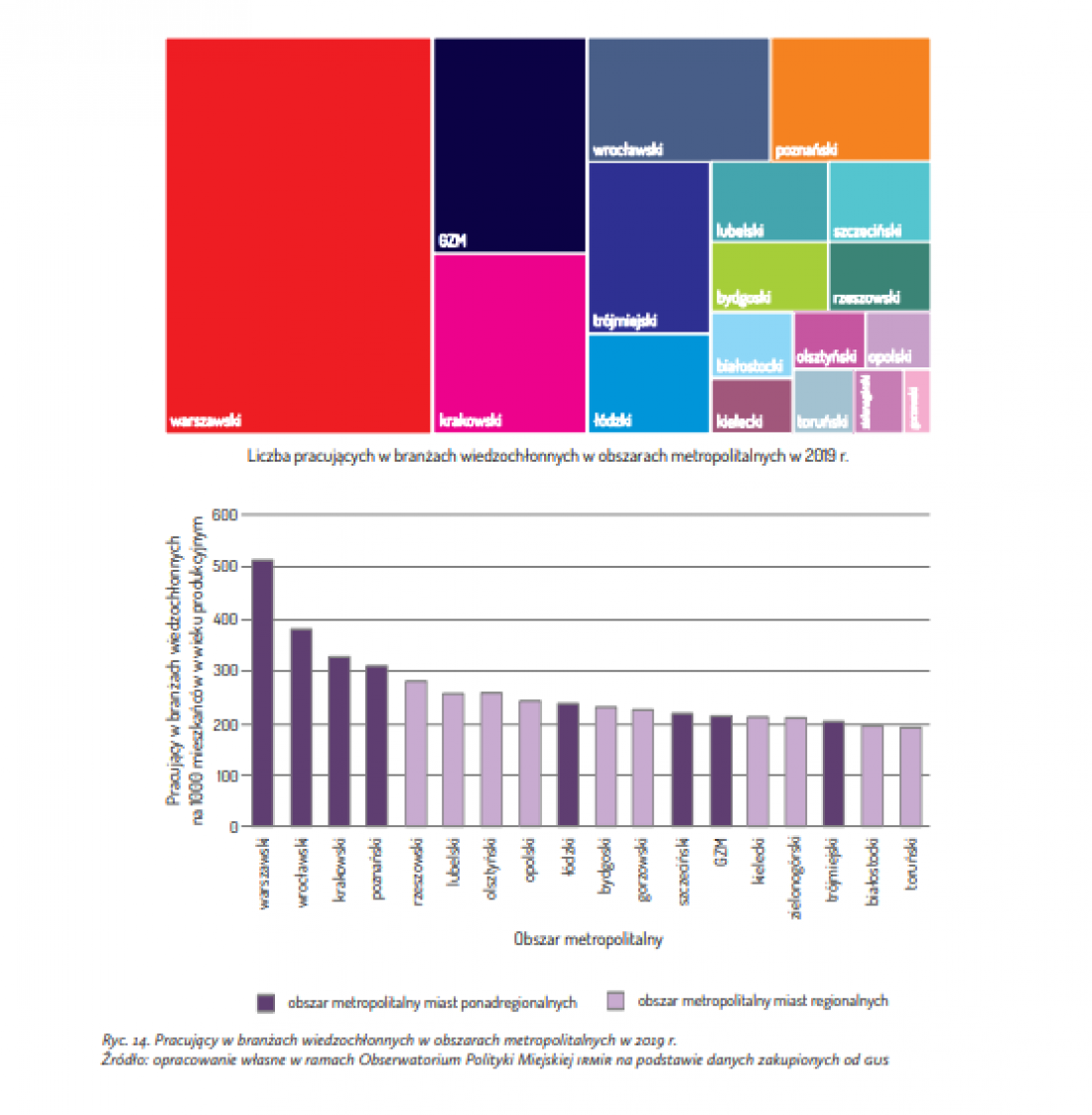We rarely define a trait such as innovation through the prism of cities, and attribute it to broader entities such as countries and continents. As experts point out, innovation and creativity should also be taken into account when developing cities.
sense the potential for innovation
Where in Poland are the centers of innovation concentrated? Is creativity the domain of only large centers and metropolises? Finally, what directions can Polish cities take to raise the degree of their innovativeness, which is an immanent feature of a modern economy?
As part of our #ReportThursday series, we present documents, reports and guides on architecture, cities and local government that are certainly worth publicizing and promoting. This week we look at the report "Innovation and Creativity of Urban Centers," released by the IRMiR's Urban Policy Observatory. The authors and contributors to the report are Agnieszka Sobala-Gwosdz, Piotr Czakon, Krzysztof Gwosdz, Katarzyna Hetmańczyk and Karolina Piech.
The report is available on the OPM IRMIR website.
The authors and authors of the report are Agnieszka Sobala-Gwosdz, Piotr Czakon, Krzysztof Gwosdz, Katarzyna Hetmańczyk and Karolina Piech
© IRMIR Urban Policy Observatory
"innovation-creating" factors
How was the study conducted? It took into account a number of aspects that affect the evaluation of innovation - these include the evaluation of educational, academic and scientific potential. The analysis of the authors and authors took into account, for example, the presence of scientific institutions, as well as study offerings or test scores in schools.
In addition to educational factors, the issues of infrastructure for innovation, patent activity, the participation of small and medium-sized enterprises, and raising funds for investment were taken into account. An interesting factor was the indication of human capital, which is the basis of innovation.
How is the high potential for innovation in urban centers created? The authors and creators point to three elements - the concentration of medium- and high-tech enterprises, human capital resources and the existence of institutions that generate and support innovation.
Among the elements addressed, the methodological appendix also cites the issue of raising funds for research
© IRMiR Urban Policy Observatory
no change on the podium
What are the findings of the report? There is no change in the situation on the podium when it comes to centers generating the greatest potential for innovation development. Here, metropolises such as Krakow, Warsaw and Wroclaw reign supreme. They are the ones with the greatest potential for generating positive innovation in the city and the economy.
While the place of metropolises on the podium of innovation centers is not something unexpected, it may be interesting to note the existence of "technopoles" - cities at the level of about 200,000 inhabitants, which are characterized by high levels of innovation and innovation potential. Such centers include, among others: Rzeszow, Bielsko-Biala, or Gdynia. Some of them are provincial centers that have succeeded in overcoming certain anti-development trends.
Among the interesting exceptions are two very small urban centers, characterized by small populations and high innovativeness - Mielec and Puławy. High innovativeness in these cases is associated with active organizations on the ground.
The places that concentrate the greatest development of innovation remain metropolises
© IRMiR Urban Policy Observatory
biggest problem - medium-sized cities
Where lies the problem in the development of former provincial cities? First of all, in avoiding competing with or imitating larger centers. The direction for them should be absolutely different, although still requiring new openings and debates. The decline in the value and existence of these centers, is the biggest challenge in the ongoing polarization-diffusion model.
The search for an idea for dozens of Polish cities that are not full-fledged metropolises, which must not be reduced to the role of unhappily overgrown district centers, will be one of the most interesting processes of the next two to three decades," Professor Rafał Matyja pointed out in his book "Urban Land. 250 Years of the Polish Game with Modernity."
The question of a direction that includes more diverse development opportunities is an open question. The report aptly shows the directions that need to be strengthened to break the current development model, which is unsatisfactory from the perspective of non-metropolitan cities.
The report is available on the OPM IRMIR website.


























